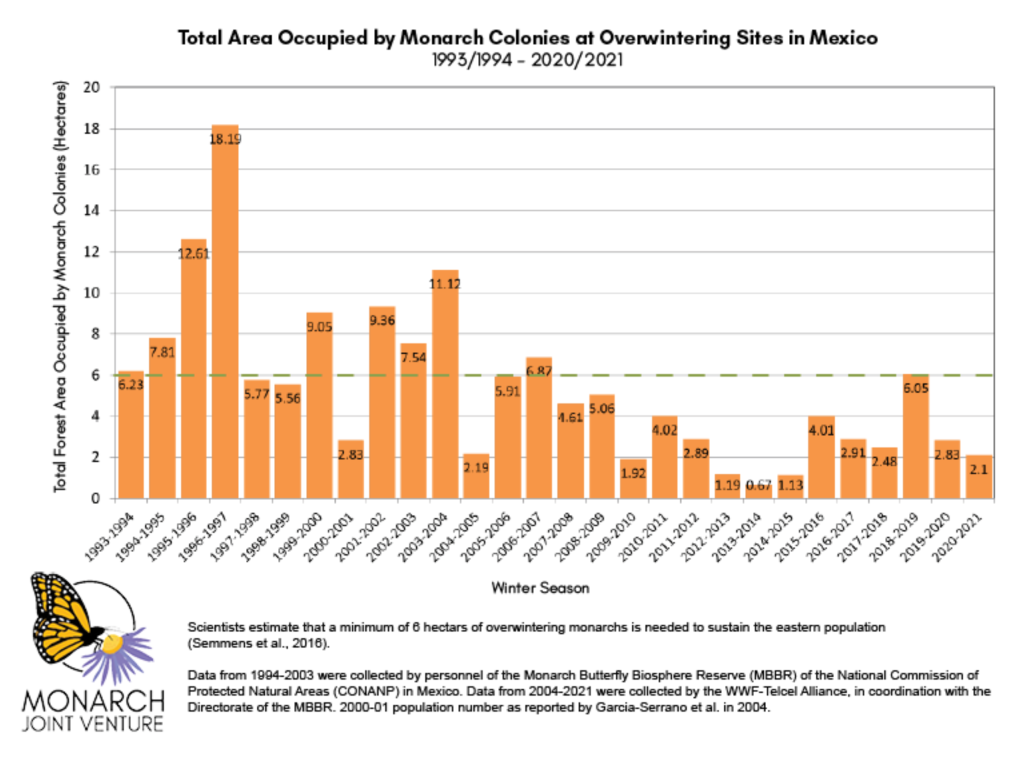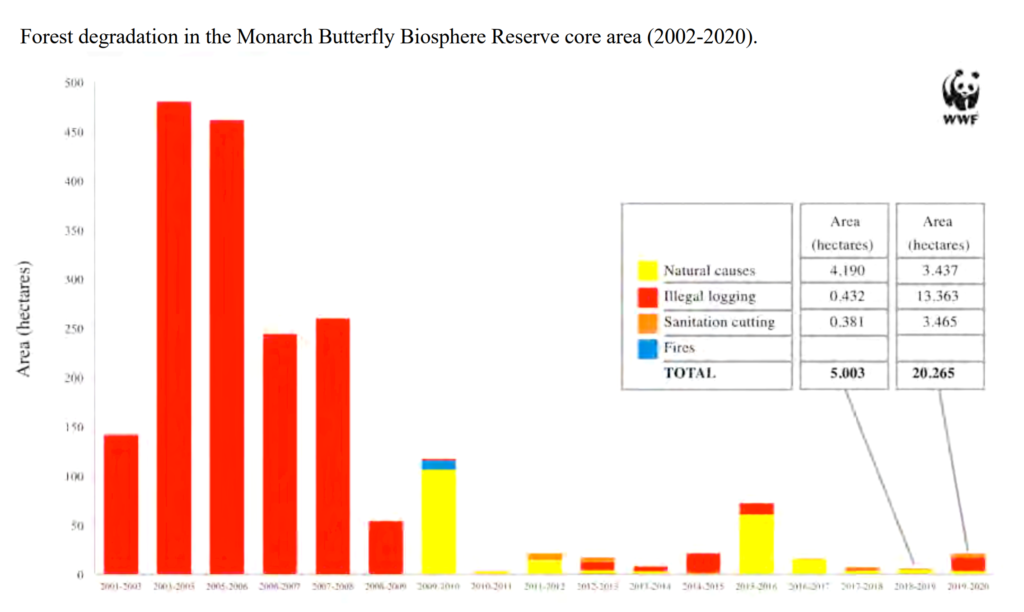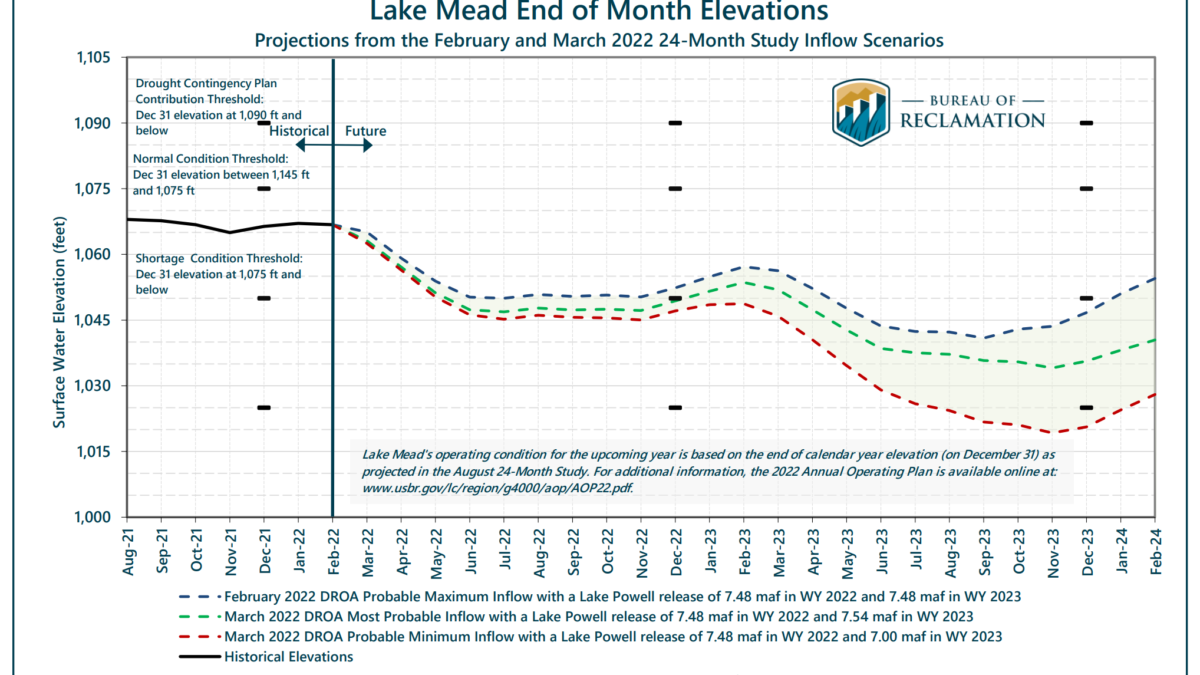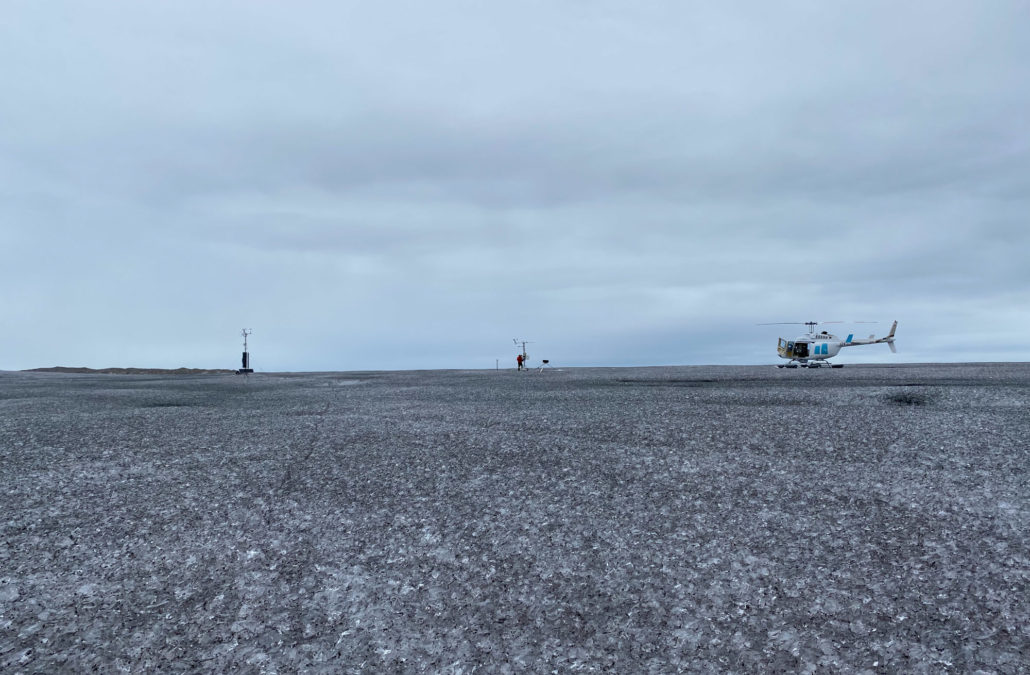Eastern Monarch butterfly population declined by 26 percent in 2020 – Degradation of temperate forests in the Monarch Butterfly Biosphere Reserve was four times higher than in 2019

By Wendy Caldwell
25 February 2021
MEXICO CITY (Monarch Joint Venture) – The presence of the Monarch butterfly in the Mexican hibernation forests decreased by 26 percent last December, occupying 2.10 hectares (ha) compared to the 2.83 ha reported during the same month in 2019. Meanwhile, the core forest area in the Monarch Butterfly Biosphere Reserve (MBBR) where the lepidopteran establishes the main hibernation colonies recorded, between March 2019 and March 2020, 20.26 ha of degradation, four times more than in 2018-2019 when 5 ha were degraded, reveal two studies by the WWF-Telmex Telcel Foundation Alliance, in collaboration with the National Commission of Protected Natural Areas (CONANP) and the National Autonomous University of Mexico (UNAM) [Less Monarch butterfly presence and increased
degradation in its hibernation forests (pdf)].
In addition to the change in land use and the reduction of milkweed in their breeding sites in the United States recorded in recent years, climate change had a considerable impact on the Monarch’s migration process. During the spring and summer of 2020, climatic variations in the southern United States were not favorable for milkweed blossoms and the development of eggs and larvae. This limited the reproduction of the Monarch population, with an impact on the migrant generation, reducing the population of this insect throughout North America and leading to a smaller population occupying the Mexican forests during its hibernation.
2020 was a hard year for Monarch butterflies
- Monarch presence in Mexico’s hibernation sanctuaries decreased by 26 percent.
- The degradation of temperate forests in 2020 in the Monarch Butterfly Biosphere Reserve is four times higher than in 2019.
- Climate change, land-use change, and reduction of milkweed in their breeding places affect the lepidopteran migration process.
- Coordination between Mexico, Canada, and the United States is needed urgently.
According to the colony monitoring report, during the second half of December 2020, nine Monarch butterfly colonies were recorded – two in Michoacan and seven in the State of Mexico – occupying 2.10 ha of forest. The monitoring report found that five colonies (1.32 ha) were within the Monarch Butterfly Biosphere Reserve (MBBR) and four (0.78 ha) outside of it, but still belonging to the Monarch Region. The largest colony (0.73 ha) was in the El Rosario ejido (Sierra Campanario sanctuary) and the smallest colony (0.01 ha) was in the San Joaquín Lamillas ejido; for the third time, the Ojo de Agua neighborhood (Peña Ahumada sanctuary) registered an occupation of 0.02 ha. The Atlautla colony, which is located outside the Monarch Region, in a community bordering the Iztaccihuatl-Popocatepetl National Park, occupied 0.08 ha of forest.
Jorge Rickards, Director General of WWF-Mexico, pointed out that, although this butterfly is not in danger of extinction, its migratory process is at risk, for which he urged the governments, the scientific community and civil society from Mexico, the United States and Canada to reinforce their tasks, each within its own field but with a common focus. “Monarch butterflies show us how individual work, in this case, migration, can become an exceptional collaborative exercise, when all these migrants gather in the forests to hibernate together and buffer the climate”.

The analysis of forest cover in the MBBR also detected clandestine logging as the primary cause of forest degradation in the core area. The ejido of Crescencio Morales and the Indigenous Communities of Nicolás Romero and San Felipe de los Alzati suffered the greatest damage from this cause, with 6.71, 2.13 and 1.87 hectares respectively. The degradation also corresponded to the fall of trees by wind and drought and by sanitation activities, due to pest control activities.
Mexico, Canada and the United States are part of the Monarch’s migration route and are aware of the major challenges it faces: i) the reduction of its habitat in the breeding sites due to the decrease of milkweed in the United States; ii) land-use change in the United States and Mexico; iii) forest degradation in hibernation sites in Mexico, and iv). extreme weather in all three countries. Today’s urgent call is to double-down on our efforts and work together to confront all the situations that threaten its journey and reproduction.
The WWF-TELMEX Telcel Foundation Alliance has collaborated with CONANP to monitor the hibernation of the Monarch since 2004, and joins the Institute of Biology at UNAM to analyze the changes in forest cover in the core area of the MBBR in order to have scientific data that support the implementation of conservation strategies to benefit the species, the ecosystems and local communities.
WWF has been measuring the forest area occupied by butterflies during their hibernation and monitoring the Reserve’s forest for 17 years. It has also developed conservation strategies by promoting, monitoring and strengthening sustainable projects that include the participation and support from the communities.
The United Nations Educational, Scientific and Cultural Organization (UNESCO) recognized the core area of the Monarch Butterfly Biosphere Reserve, which has 13,551 hectares protected, as a Natural World Heritage Site. The Reserve offers refuge to 132 species of birds, 56 mammals, 432 vascular plants, and 211 different fungi. The region’s basins filter water into the Cutzamala System for over 4.1 million people in 13 municipalities of Mexico City and 14 municipalities of the State of Mexico, while generating oxygen.


